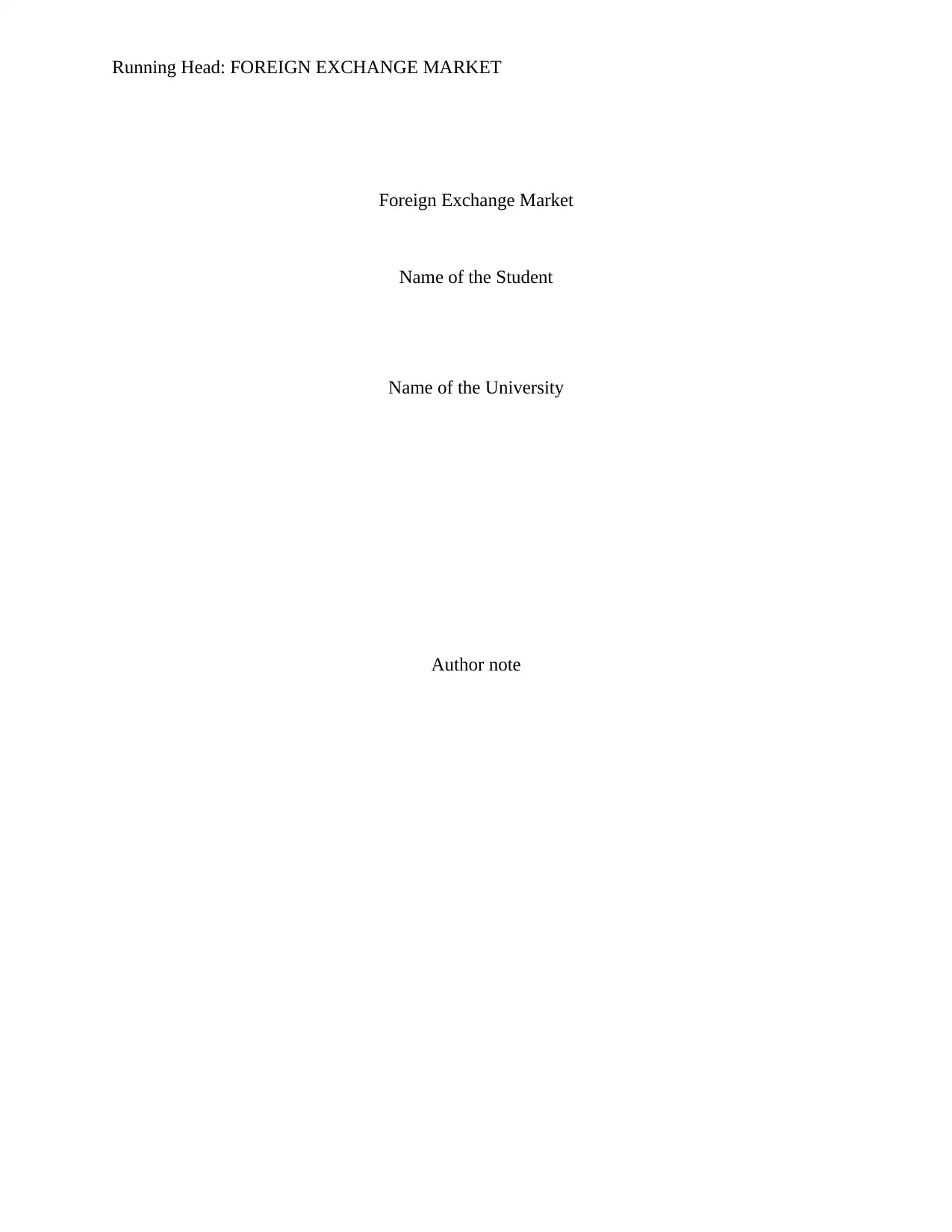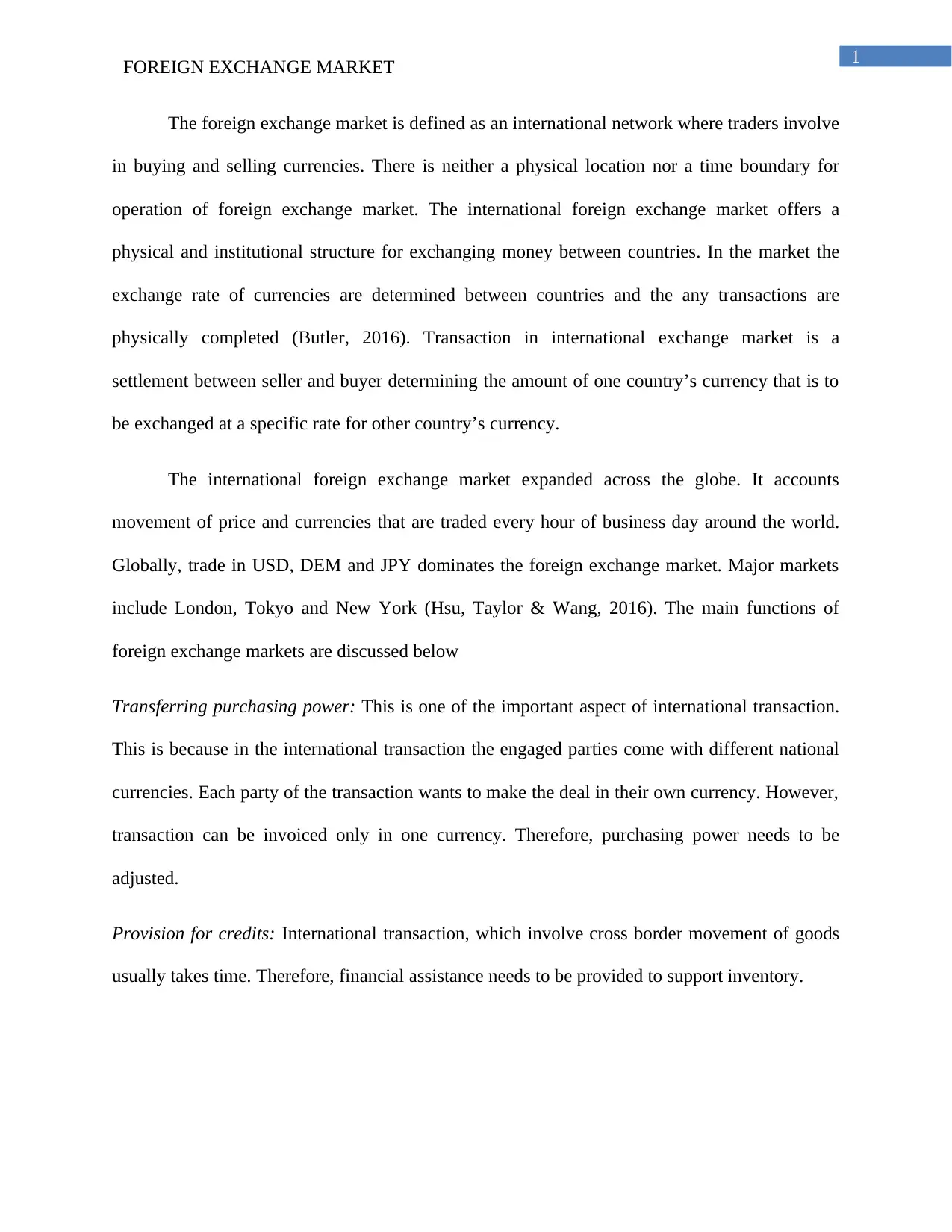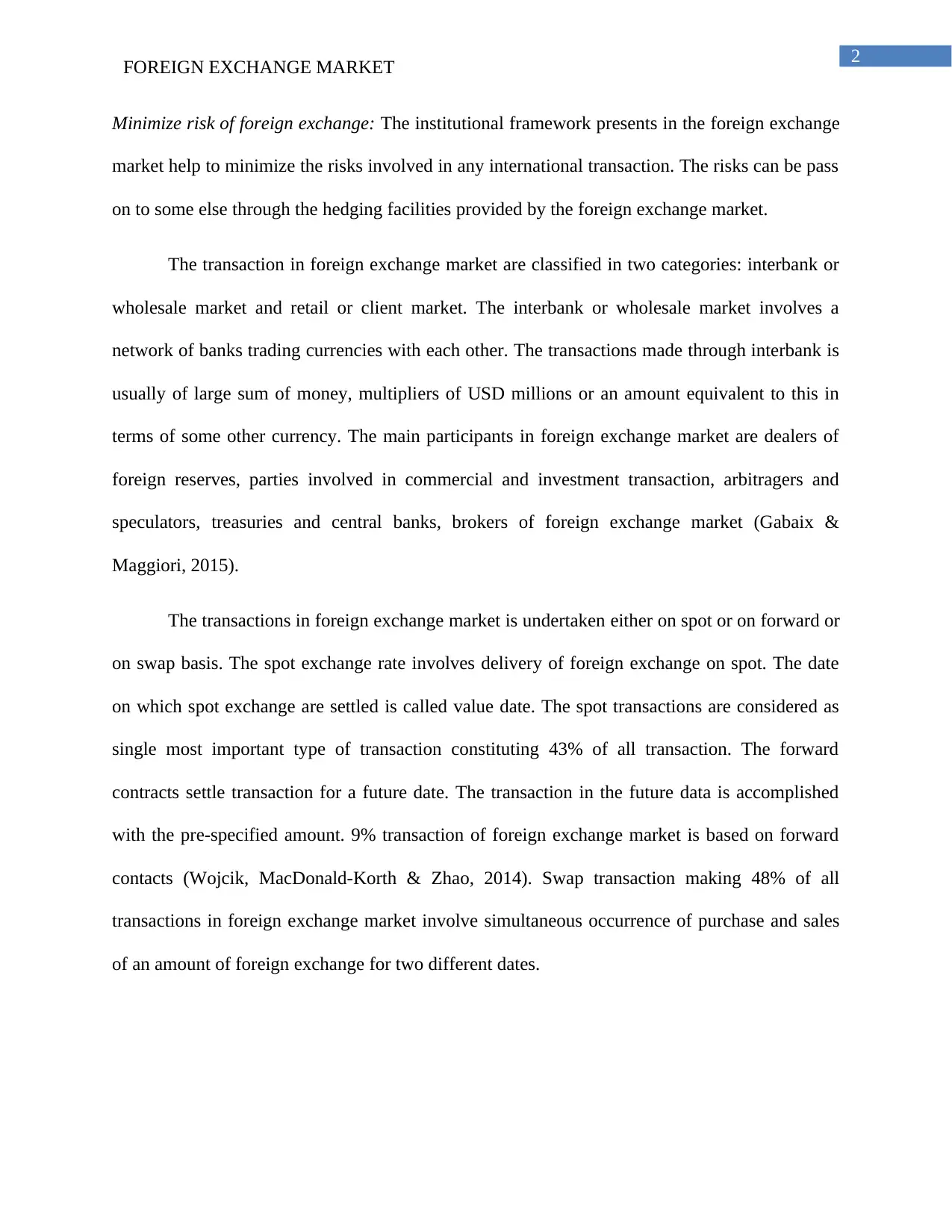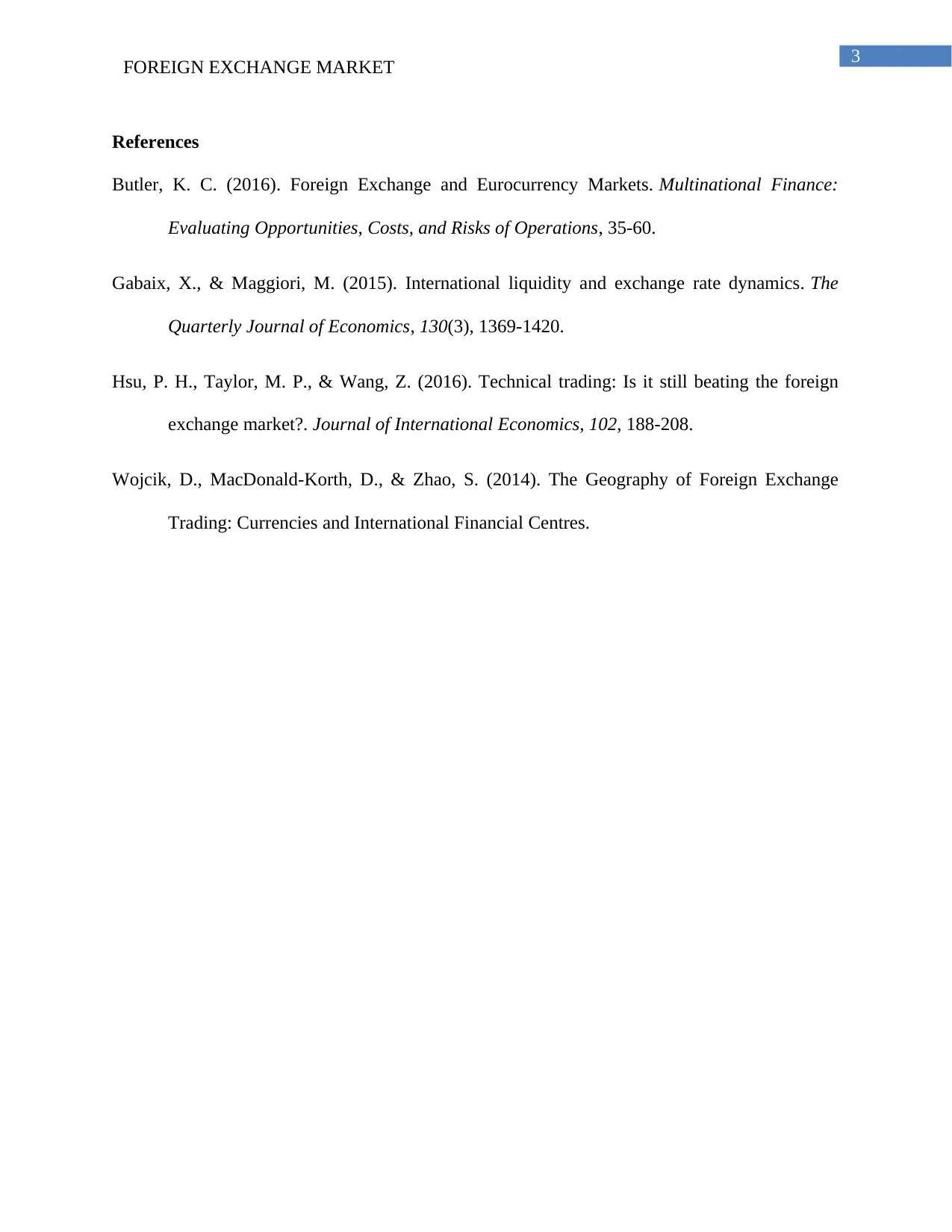Week 6 Assignment: A Deep Dive into the Foreign Exchange Market
VerifiedAdded on 2023/06/15
|4
|742
|65
Essay
AI Summary
This essay defines the foreign exchange market as an international network for currency trading, highlighting its lack of physical location and time boundaries. It details the market's role in determining exchange rates and facilitating international money exchange. The essay outlines the market's functions, including transferring purchasing power, providing credit, and minimizing foreign exchange risk. It distinguishes between interbank and retail markets, identifies key participants such as dealers, commercial entities, arbitragers, and central banks, and classifies transactions based on spot, forward, and swap arrangements. The essay concludes by referencing relevant academic sources on the foreign exchange market and its dynamics. Desklib provides this essay and many other resources for students.
1 out of 4











![[object Object]](/_next/static/media/star-bottom.7253800d.svg)